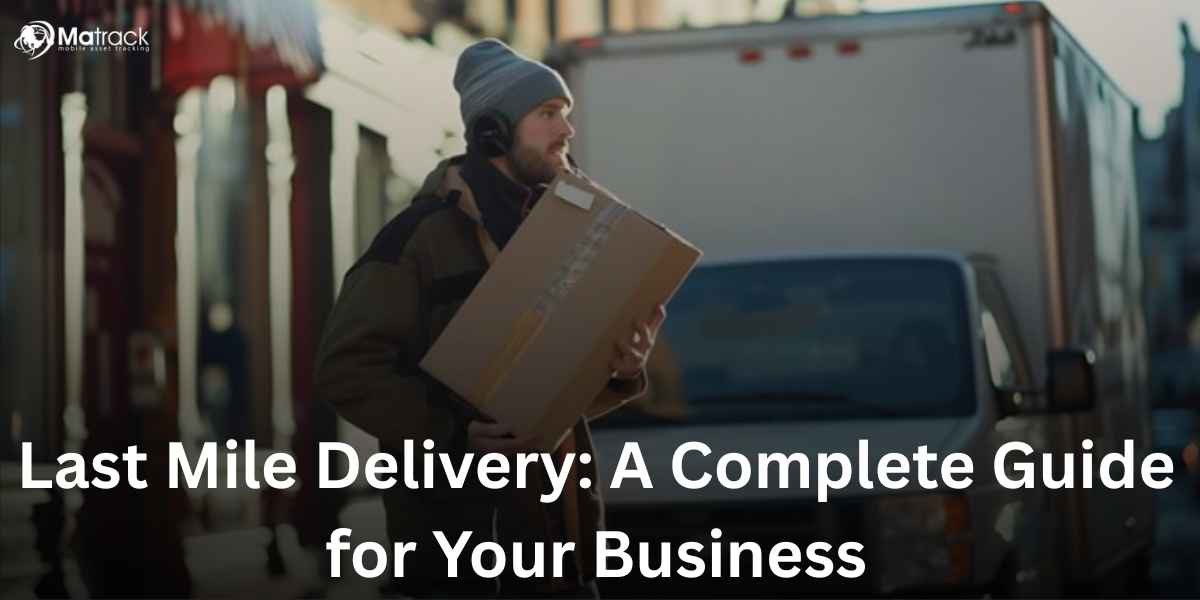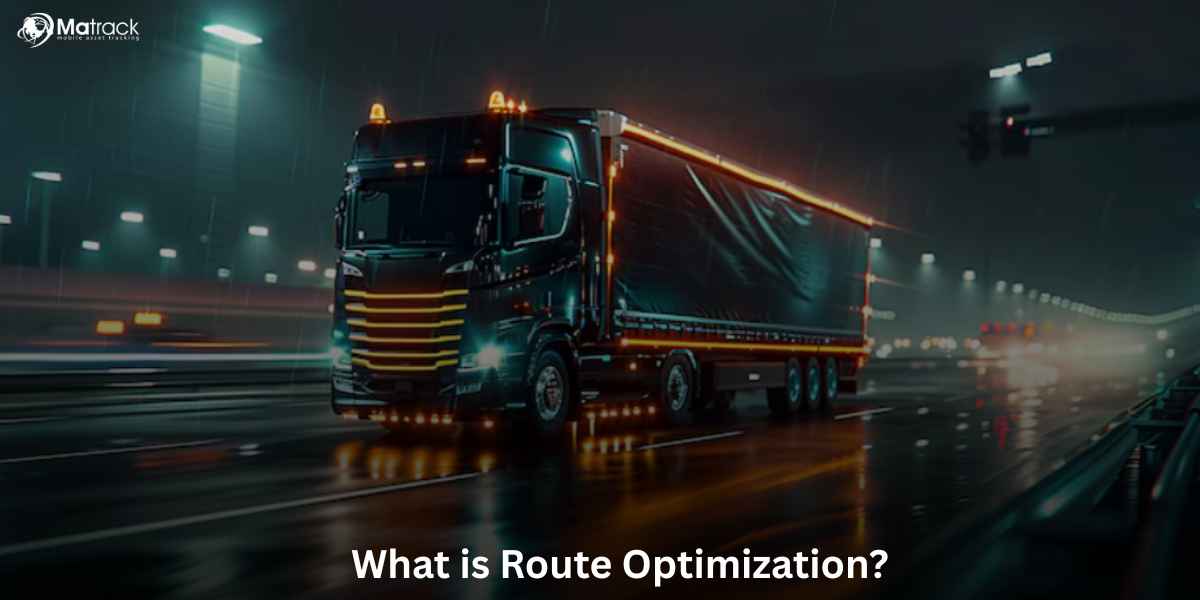Key Takeaways:
- Last mile delivery is the final and most customer-visible step that directly impacts satisfaction.
- High costs, failed deliveries, and traffic delays are the main challenges businesses must solve.
- Optimizing delivery requires real-time tracking, efficient routing, and flexible delivery options.
- Using tools like Matrack GPS fleet trackers improves delivery accuracy, driver performance, and overall efficiency.
What is Last Mile Delivery?
Last mile delivery is the final step in getting an order to a customer, where the package moves from a nearby warehouse to the buyer’s door. It connects the logistics system directly to the customer, making it the most personal and visible part of the entire process.
This stage often decides how the customer feels about the purchase, no matter how smooth everything before it was. If the delivery is fast and accurate, it builds trust, if it’s late or missed, it damages the entire experience.
Why is Last Mile Delivery Important?
Last mile delivery matters because it’s the part of the process the customer notices most. It’s when the order finally shows up at their door, so any delay or mistake directly affects how they feel about the entire experience.
It’s also the most expensive part of delivery, with many stops, changing routes, and more time per order. When businesses make this step faster and more reliable, they save money and make customers happier at the same time.
Steps Involved in Last Mile Delivery
Order processing
Order processing starts when a customer places an order. The system checks the order details and forwards it to the closest warehouse or store.
Package sorting
Package sorting involves picking the items, packing them securely, and labeling them with the right address. Packages are grouped based on where they need to go.
Route planning
Route planning uses traffic data and delivery time slots to find the fastest way to reach all destinations. This helps save time and fuel during the delivery run.
Vehicle loading
Vehicle loading is done in a way that matches the delivery route. This makes it quicker for the driver to find and deliver each package in the right order.
Out for delivery
Out for delivery means the driver has left the hub and started the route. Customers often get real-time updates or notifications at this stage.
Final delivery
Final delivery is when the package reaches the customer’s address. Proof of delivery is captured through a photo, signature, or app confirmation.
Delivery confirmation
Delivery confirmation is sent to the customer once the drop-off is complete. Some services also ask for feedback to track satisfaction and improve service.
What Are the Challenges in Last Mile Delivery?
Last mile delivery adds the most pressure to both cost and performance in the logistics chain. It affects how much businesses spend, how reliable the service is, and how much impact it has on the environment. These are the five biggest challenges:
High costs
Fuel, driver wages, and vehicle upkeep make last mile delivery the most expensive part of the process. In busy cities, delays and frequent stops drive up the cost per delivery.
Route inefficiency
Creating the best delivery route takes real-time traffic updates, accurate maps, and time slot coordination. Even small errors or wrong addresses can lead to major delays.
Failed Deliveries
Failed deliveries cost companies billions of dollars annually and significantly impact customer satisfaction.(Source: Harvard Business Review)
Urban congestion
City deliveries are slowed down by traffic, limited parking, and strict time windows. Some areas even block vehicle access during peak hours or for environmental reasons.
Environmental Pressure
Delivery trucks and trailers make up approximately 4% of vehicles on U.S. roads but are responsible for nearly half of nitrogen oxide emissions and almost 60% of fine particulate emissions from all vehicles.
How to Optimize Last Mile Delivery?
To improve last mile delivery, apply these 8 practical strategies that reduce costs, increase delivery speed, and improve service quality:
Use Route Optimization Software
Route optimization tools calculate the fastest and most efficient delivery paths using real-time traffic, distance, and delivery time windows. This reduces fuel usage, shortens delivery times, and increases the number of successful deliveries per route.
Deploy Real-Time Tracking
Real-time tracking systems give customers live updates and help delivery teams monitor progress. This improves communication, increases delivery accuracy, and lowers the chance of missed or delayed deliveries.
Adopt Micro-Fulfillment Centers
Micro-fulfillment centers are small warehouses located close to customer areas. They shorten the distance between products and end-users, making same-day and next-day delivery faster and more cost-effective.
Implement Contactless Delivery
Contactless delivery methods allow packages to be dropped off securely without face-to-face interaction. Digital confirmations and drop-off verification increase safety and efficiency.
Integrate Electronic Proof of Delivery (ePOD)
ePOD solutions capture digital signatures, timestamps, and location data at the point of delivery. This improves accuracy, reduces disputes, and ensures clear delivery records.
Utilize Crowdsourced Delivery Fleets
Crowdsourced fleets use independent local drivers to handle dynamic or last-minute deliveries. This adds flexibility, lowers fixed fleet costs, and supports quick scaling during peak demand.
Offer Parcel Lockers and Pick-Up Points
Lockers and collection points allow customers to pick up packages at their convenience. This reduces failed delivery attempts and lowers the need for repeat delivery trips.
Transition to Electric and Green Vehicles
Using electric or low-emission vehicles reduces environmental impact and operating costs. It also helps meet government regulations in low-emission or high-density zones.
What Technologies Are Transforming Last Mile Delivery?
Technology improves delivery predictability, automation, and speed. These 5 technologies are transforming logistics:
Artificial Intelligence (AI)
AI improves route planning, driver assignment, and demand forecasting. Machine learning predicts traffic and volume spikes.
Internet of Things (IoT)
IoT sensors monitor vehicle conditions, temperature for sensitive items, and package handling.
Read More: Fleet Management Operations With IoT
Autonomous Vehicles and Drones
Self-driving vehicles and delivery drones reduce labor costs and increase 24/7 operation capabilities. Wing and Starship Technologies are leading in deployment.
Big Data Analytics
Aggregated delivery data helps identify bottlenecks and improve delivery efficiency across regions. Predictive models use this data to forecast delays and optimize routes, leading to faster and more reliable deliveries.
Blockchain Integration
Blockchain secures transaction records, tracks package handovers, and prevents theft.
What is the Future of Last Mile Delivery?
Hyperlocal Warehousing
Pop-up hubs and retail stores transform into last mile delivery bases to reduce travel time and inventory wait time.
Autonomous Delivery Robots
Robots will handle short-range deliveries without human drivers. Cities are testing sidewalk bots for groceries and medicine.
Flexible Delivery Windows
Personalized delivery slots match user schedules and reduce missed drop-offs. AI tools assign time slots based on patterns.
Zero-Emission Fleets
Logistics leaders are pledging carbon neutrality by 2030. EVs, solar logistics hubs, and recyclable packaging become standard.
Improve Your Last Mile Delivery With Matrack GPS Fleet Tracker

Matrack GPS Fleet Tracker improves last mile delivery by giving you real-time visibility of your vehicles. With live GPS updates and instant alerts, you always know the exact location and status of each delivery on the road.
It helps prevent delays by monitoring vehicle health and driver actions. You can catch problems like speeding, harsh braking, or engine issues early, which keeps your fleet running and deliveries on time.
The system is simple to use and works on both desktop and mobile. You can easily track routes, adjust schedules, and manage drivers from anywhere, keeping your last mile delivery efficient and reliable.

